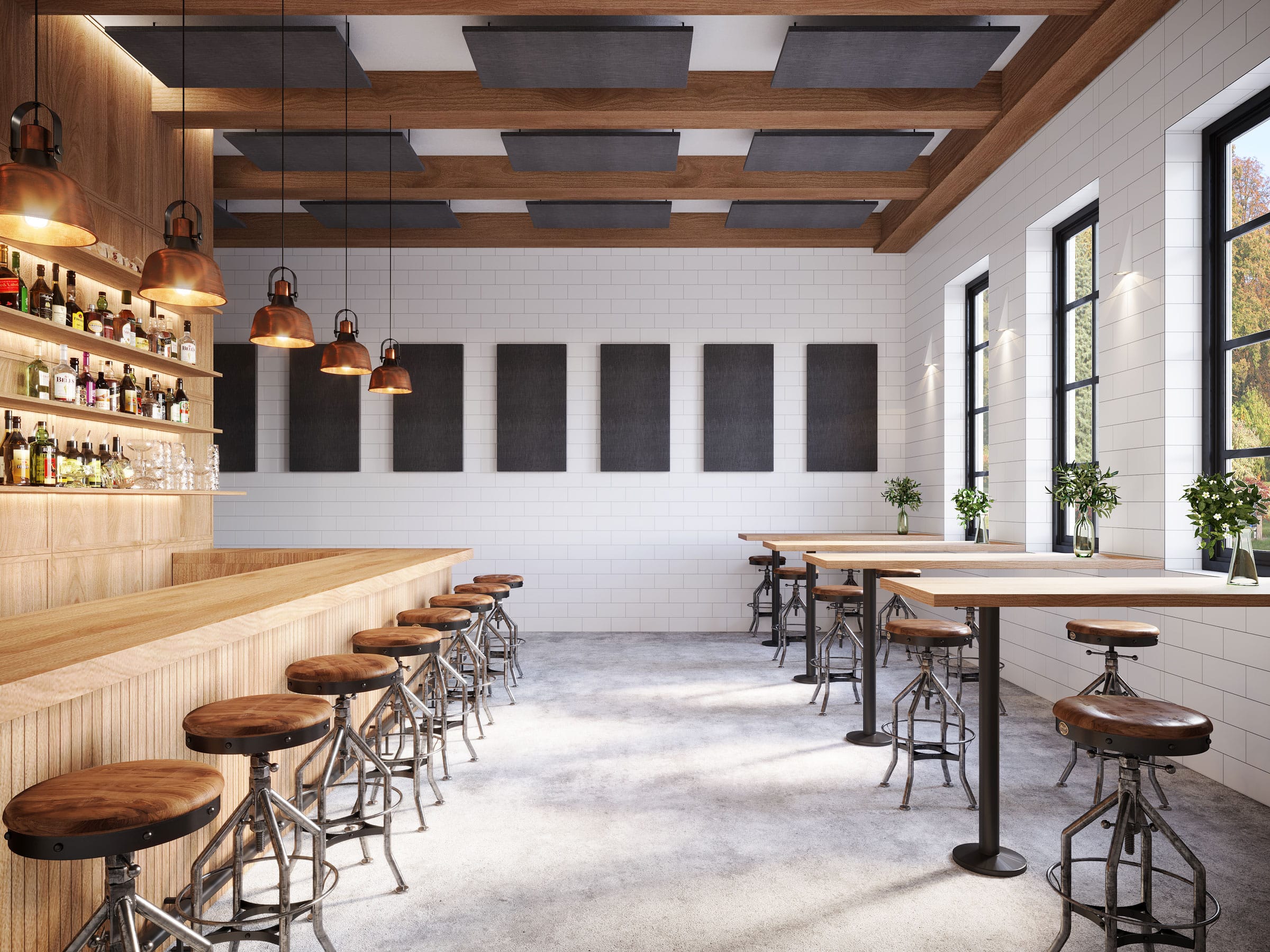The Power of Audio: Changing Rooms with Acoustic Solutions
The Power of Audio: Changing Rooms with Acoustic Solutions
Blog Article
Accomplish Perfect Harmony in your house With Reliable Soundproofing Techniques for Ideal Acoustics
Soundproofing plays an important role in accomplishing optimal acoustics, influencing the means we experience and communicate with our living rooms. By comprehending the principles of soundproofing, identifying resources of sound disturbances, picking appropriate products, and using proven methods, you can change your home into a shelter of tranquility where noise boosts rather than interrupts.

Understanding Soundproofing Basics
Soundproofing is rooted in the understanding of just how audio waves travel and interact with different materials. The trick to effective soundproofing lies in disrupting or soaking up these sound waves to minimize their transmission from one room to one more.
Understanding the principle of sound transmission class (STC) scores is important in selecting the appropriate materials for soundproofing. The STC rating gauges how well a product can minimize airborne audio transmission through it, with greater STC ratings showing much better soundproofing capacities. Furthermore, considering the effect of impact insulation course (IIC) ratings for minimizing impact sound, such as footsteps or furnishings moving, can further improve the effectiveness of soundproofing options.
Assessing Noise Resources in Your Home
Structure upon the foundational understanding of soundproofing principles, a critical action in reliable noise reduction within your home entails identifying and analyzing the various sources of undesirable sound. Noise sources can be classified into 2 major types: airborne sound, that includes seem like conversations, music, and tv, and effect sound, such as footsteps or products being dropped. To examine these sources, think about the different areas in your home and the activities that generally occur in each. The living area might have much more air-borne sound from amusement systems, while effect sound from footprints might be a concern in areas with hard flooring like hallways or kitchen areas.
In addition, take into consideration exterior sources of noise, such as traffic, next-door neighbors, or neighboring building and construction, which can additionally affect the acoustics within your home. acoustic solutions. Determining these sources will certainly aid you prioritize areas for soundproofing and pick one of the most efficient services. By pinpointing the details sound sources in your house, you can customize your soundproofing efforts to achieve optimum results and create an extra relaxed and harmonious living environment
Picking the Right Soundproofing Materials
When choosing soundproofing products for your home, it is vital to focus on effectiveness and compatibility with your certain sound issues. Take into consideration factors such as the type of sound you are attempting to block, the level of soundproofing required, and the aesthetics of the materials to guarantee they mix seamlessly into your living room.
One usual material for soundproofing is acoustic foam. This lightweight and flexible product is great for taking in mid to high-frequency noises, making it excellent for music rooms, home movie theaters, or workplaces. An additional alternative is mass-loaded vinyl, which is effective in blocking out low-frequency sounds like website traffic or equipment audios. For click this site wall surfaces and ceilings, soundproof drywall is a popular option due to its ability to decrease noise transmission between spaces.
Curtains and rugs made from sound-absorbing materials are also effective in dampening noise, particularly in locations with tough surface areas that create audio to jump about. Keep in mind, the secret to successful soundproofing is choosing the best materials that address your specific sound concerns while boosting the general comfort and acoustics of your home.
Executing Soundproofing Techniques
To efficiently implement soundproofing techniques in your house, it is critical to begin by examining my company the areas that are most susceptible to sound seepage. Typical sources of sound can consist of outside sounds from website traffic, next-door neighbors, or close-by construction, along with inner sources like appliances, pipes, and enjoyment systems. When you have recognized these areas, you can start applying soundproofing services tailored to every particular room.

For more significant noise reduction, think about setting up soundproof drywall, double-glazed home windows, or durable networks to separate resonances. In addition, repositioning furnishings, including shelfs, or including sound-absorbing products can better enhance the acoustics of a room. By strategically implementing these soundproofing techniques, you can create a quieter and more peaceful living environment in your house.
Keeping and Improving Acoustic Setting
After applying soundproofing strategies to attend to sound infiltration in your home, the emphasis changes in the direction of preserving and improving the acoustic environment to ensure a consistently peaceful home. To keep ideal acoustics, on a regular basis check soundproofing materials for wear and tear, guaranteeing they continue to be efficient in blocking undesirable sound. Keep windows and doors effectively sealed to stop audio leak and consider including weather condition stripping or door moves for extra soundproofing.
Improving the acoustic atmosphere can entail calculated placement of furnishings, rugs, and drapes to moisten sound representations and echoes. Making use of sound-absorbing materials such as acoustic panels or foam can further improve the overall audio high quality in your house. acoustic solutions. Furthermore, incorporating soft home furnishings like cushions and coverings can help lower noise echo, creating an extra enjoyable acoustic experience
Additionally, buying sound-absorbing design components like bookshelves, tapestries, or plants can add to a balanced acoustic setting. Frequently decluttering your room can also stop sound waves from bouncing off surface areas, ultimately enhancing the total acoustics of your home. By regularly keeping and Click Here enhancing your acoustic atmosphere, you can develop a harmonious and relaxing home on your own and your household.
Verdict
In conclusion, accomplishing excellent harmony in your home with reliable soundproofing strategies is vital for optimum acoustics. By understanding soundproofing basics, examining sound resources, choosing the best materials, carrying out strategies, and maintaining the acoustic environment, you can create a relaxed and delightful living space without unwanted noise disturbances. Prioritizing soundproofing initiatives can dramatically boost the total top quality of life in your house.
Report this page